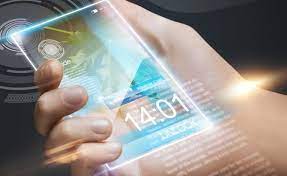The Fascinating World of Augmented Reality
Augmented Reality (AR) is a groundbreaking technology that has been revolutionizing various industries, from gaming and entertainment to healthcare and education. Unlike Virtual Reality (VR), which immerses users in a completely virtual environment, AR overlays digital information onto the real world, enhancing our perception and interaction with the surroundings.
One of the most well-known applications of AR is in mobile gaming, with the phenomenal success of games like Pokémon GO showcasing the potential of blending virtual elements with real-world environments. By using a smartphone or AR glasses, players can see digital creatures and objects overlaid on the streets and parks around them, creating an immersive and interactive gaming experience.
But AR goes far beyond gaming. In healthcare, surgeons can use AR to visualise internal organs during complex procedures, helping them navigate with precision and accuracy. Patients can also benefit from AR technology through interactive rehabilitation exercises or virtual consultations with healthcare providers.
Education is another field where AR is making a significant impact. Students can explore historical sites through augmented reality apps, bringing history to life in a way that textbooks cannot match. Science lessons become more engaging as students interact with 3D models of molecules or planets right in their classrooms.
Businesses are also leveraging AR to enhance customer experiences. Retailers use AR apps to allow customers to try on virtual clothes or see how furniture would look in their homes before making a purchase. Museums and art galleries use AR to provide interactive exhibits that engage visitors in new and exciting ways.
As technology continues to advance, the possibilities for augmented reality are endless. From improving productivity in industrial settings to transforming how we shop, learn, and communicate, AR has the potential to reshape our world in profound ways.
Whether you are a tech enthusiast exploring the latest innovations or a professional seeking new ways to enhance your work processes, augmented reality offers a glimpse into a future where digital and physical realities seamlessly blend together.
Embrace the wonders of augmented reality and discover how this transformative technology is shaping the world around us!
Six Key Benefits of Augmented Reality: Transforming Experiences Across Various Sectors
- Enhances user experience by blending digital elements with the real world.
- Provides interactive and engaging educational opportunities for students of all ages.
- Offers innovative solutions for businesses to create unique and personalised customer experiences.
- Facilitates hands-free access to information through AR glasses or mobile devices.
- Empowers healthcare professionals with advanced visualisation tools for surgeries and medical training.
- Encourages creativity and exploration through immersive gaming experiences that transcend traditional boundaries.
Seven Drawbacks of Augmented Reality: From Limited View to High Costs
- 1. Limited Field of View
- 2. Battery Drain
- 3. Privacy Concerns
- 4. Costly Hardware
- 5. Motion Sickness
- 6. Reliance on Internet Connectivity
- 7. Development Challenges
Enhances user experience by blending digital elements with the real world.
Augmented reality enhances user experience by seamlessly blending digital elements with the real world, creating a dynamic and interactive environment that transcends traditional boundaries. By overlaying virtual information onto physical surroundings, AR technology enriches our perception of reality and offers new ways to engage with the world around us. Whether it’s exploring virtual landscapes in gaming or visualising complex data in a business context, the fusion of digital and physical elements through augmented reality opens up a realm of possibilities for immersive and captivating user experiences.
Provides interactive and engaging educational opportunities for students of all ages.
Augmented reality offers a remarkable advantage by providing interactive and engaging educational opportunities for students of all ages. By overlaying digital content onto the real world, AR enables students to immerse themselves in interactive learning experiences that stimulate their curiosity and creativity. Whether exploring historical landmarks, dissecting virtual organisms, or conducting scientific experiments in a virtual lab, AR enhances traditional teaching methods and makes learning more dynamic and captivating. This innovative approach not only caters to diverse learning styles but also fosters a deeper understanding and retention of educational concepts, making learning a truly immersive and enjoyable experience for students across all age groups.
Offers innovative solutions for businesses to create unique and personalised customer experiences.
Augmented reality offers innovative solutions for businesses to create unique and personalised customer experiences. By integrating AR technology into their marketing strategies, businesses can engage customers in interactive and immersive ways, allowing them to visualise products in their own environment before making a purchase. This personalised approach not only enhances the shopping experience but also builds brand loyalty and increases customer satisfaction. With AR, businesses can differentiate themselves in a competitive market by offering a cutting-edge and memorable experience that resonates with customers on a deeper level.
Facilitates hands-free access to information through AR glasses or mobile devices.
One of the key advantages of augmented reality is its ability to provide hands-free access to information through AR glasses or mobile devices. This feature allows users to receive real-time data, instructions, or visual cues without the need to constantly hold or interact with a device. Whether in professional settings where workers need to access information while keeping their hands free for tasks, or in everyday situations where users want to navigate their surroundings without being glued to a screen, AR technology offers a convenient and intuitive way to interact with digital content seamlessly integrated into the physical world.
Empowers healthcare professionals with advanced visualisation tools for surgeries and medical training.
Augmented reality empowers healthcare professionals with advanced visualisation tools that revolutionise surgeries and medical training. By overlaying digital information onto the real-world surgical environment, AR enables surgeons to visualise intricate anatomical structures in real time, enhancing precision and accuracy during procedures. Medical students also benefit from AR technology by gaining hands-on experience through realistic simulations and interactive training modules, ultimately improving their skills and knowledge in a safe and immersive learning environment. This innovative use of augmented reality in healthcare not only enhances patient outcomes but also elevates the standard of medical education and training for future generations of healthcare professionals.
Encourages creativity and exploration through immersive gaming experiences that transcend traditional boundaries.
Augmented reality encourages creativity and exploration by offering immersive gaming experiences that break free from traditional boundaries. By overlaying digital elements onto the real world, AR games inspire players to think outside the box and interact with their surroundings in innovative ways. This unique blend of virtual and physical environments challenges gamers to explore new perspectives, think creatively, and push the limits of their imagination, fostering a sense of adventure and discovery unlike anything seen in traditional gaming formats.
1. Limited Field of View
One significant drawback of augmented reality technology is the limited field of view that AR devices typically offer. This limitation restricts the amount of augmented content that users can see and interact with simultaneously, potentially impacting the overall user experience. Users may find themselves constantly adjusting their position or orientation to view all the augmented elements, which can be frustrating and disrupt the seamless integration of digital information into the real world. As AR developers continue to innovate and improve device capabilities, addressing this issue of limited field of view remains a key challenge in enhancing the usability and practicality of augmented reality applications.
2. Battery Drain
One significant drawback of augmented reality technology is its tendency to drain the battery life of devices at a rapid pace. When using AR applications, the processing power required to overlay digital information onto the real world can put a heavy strain on device batteries, leading to quicker depletion. This constant drain on battery life necessitates frequent recharging or access to power sources, which can be inconvenient for users who rely on their devices throughout the day. The need for efficient power management solutions remains a key challenge in maximising the usability and practicality of augmented reality experiences.
3. Privacy Concerns
Privacy concerns surrounding augmented reality technology are a significant drawback that cannot be overlooked. The potential for AR devices to collect and store data about users’ environments and behaviours raises valid concerns about the protection of personal information. As these devices interact with the real world, there is a risk of sensitive data being captured without users’ consent, leading to potential privacy breaches and misuse of personal information. Addressing these privacy challenges is crucial to ensure that the benefits of augmented reality can be enjoyed without compromising individuals’ privacy rights.
4. Costly Hardware
One significant drawback of augmented reality is the cost associated with acquiring high-quality AR hardware. The price of advanced AR devices can be prohibitive for many users, limiting accessibility to those who may not have the financial means to invest in the latest technology. This disparity in affordability creates a barrier to entry for individuals who could benefit from AR applications but are unable to access the necessary hardware, highlighting a challenge in ensuring equitable access to this innovative technology.
5. Motion Sickness
Some users may encounter the drawback of motion sickness or discomfort while using augmented reality applications for prolonged periods. This issue arises from sensory conflicts that occur when the brain receives conflicting signals from visual input and physical movement, leading to feelings of nausea or unease. As a result, individuals sensitive to motion-related stimuli may find extended use of AR technology challenging and may need to limit their exposure to prevent these unpleasant side effects.
6. Reliance on Internet Connectivity
One significant drawback of augmented reality is its reliance on internet connectivity. Numerous AR applications and experiences depend on a stable internet connection, which can pose challenges in areas with poor connectivity. This limitation hinders the usability and accessibility of AR technology, especially in remote locations or areas with unreliable network infrastructure. Users may face disruptions or delays in their AR experiences, impacting the overall effectiveness and enjoyment of the technology.
7. Development Challenges
One significant drawback of augmented reality is the development challenges it presents. Crafting engaging and functional AR content demands specialised expertise and resources, which can be a hurdle for developers. The complexity of designing immersive AR experiences that seamlessly integrate digital elements with the real world can require a steep learning curve and investment in technology, making it difficult for smaller teams or individuals to create high-quality AR applications. This barrier to entry limits the widespread adoption of AR technology and hinders its full potential in various industries.



